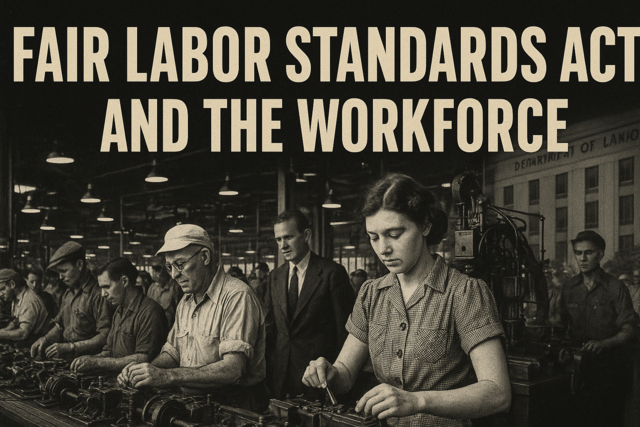When you're a part of the HR team, you need to know what is needed in the organization. While management can define some of these needs for you, it is also necessary for you to perform research to better understand how compensation and benefits may need to be adjusted.
To find out what is necessary, it is vital for you to do some research. In HR terminology, this is called performing a needs assessment. There are several different structures you can use to perform this research, and we will cover a few in order to give you a starting point.
What a Needs Assessment Is
A needs assessment defines itself: It is an assessment of the needs of an organization, a group, or some other defined structure. You can find out the needs of an organization by asking questions, performing research into the company, researching the competition, etc.
In this process, an HR professional needs to ask a number of questions about what is working and what is not working. These answers will help to highlight the gaps between the expectations and the reality of the situation in the company.
There are a number of different kinds of needs assessments:
- Organizational Analysis
- Person Analysis
- Work analysis / Task Analysis
- Performance Analysis
- Content Analysis
- Training Suitability Analysis
- Cost-Benefit Analysis
This list shows how an HR professional can begin to assess the needs of the organization by assessing individuals, as well as performance, training, etc. In addition, there are compensation- and benefits-specific analyses.
To get a sense of how to perform a needs assessment on the compensation and benefits areas, you can utilize a common tool called the SWOT analysis. This is used to help clarify issues and begin to showcase what needs to be examined more closely � and possibly changed -- to benefit the organization.
SWOT = Strengths, Weaknesses, Opportunities, Threats
You might create a chart for this type of assessment and then fill in the information you gather for each of the quadrants.
STRENGTHS:
- What are the strengths of the compensation and benefits plans?
- What is working right now?
- What is the positive feedback from employees?
- What does management like about the packages?
- What are the positive outcomes from using this package?
In an example, you might gather up the information that shows what the benefits and compensation package includes. You might also distribute surveys to the team to see what they have to say that is positive about the benefits. From this information, you will be able to notice what is positive and what is working.
WEAKNESSES:
- What are the weaknesses of the compensation and benefits plans?
- What is not working right now?
- What is the negative feedback from employees?
- What does management dislike about the packages?
- What are the negative outcomes from using this package?
Again, a lot of this information can be gained through talking with employees, distributing surveys, etc. You might learn that certain changes have impacted the way compensation and benefits are seen or used. You might find out employees want to have a certain benefit that's not included, but that is included at other companies.
OPPORTUNITIES:
- What benefits and compensation packages could be offered in the future?
- What will the benefits of these packages be?
- What has already been shown to help with benefits and compensation strategies?
This is a place where you want to take the information you've already gathered and begin to see where you might go next with the good things, or where you might begin to repair some of the negative attitudes.
You might also begin to list areas of opportunity that are specific to compensation and benefits, i.e. new plans, new benefits companies, etc.
THREATS:
- What are the limits to benefits and compensation packages?
- What will the benefits cost and add to the budget?
- What is the competition going to do next to compete with our compensation and benefits?
When you can also stop to think about how the benefits changes may cause in the future, you can plan more effectively. While it's true that you can certainly plan for success, it's also helpful to plan for things to not go well.
Being aware of threats allows you to see what you may also need to weigh during changes in strategy or compensation. You can also avoid some problems just by knowing they are possible. (Or you can look at other companies to see what they have faced and use that information as a warning!)
Why Needs Assessments Are Vital
From looking at the example SWOT, you can see how needs assessments allow you to be more thoughtful about what works and what may not work for your organization.
Needs assessments create:
- Clarity � When you have the information in front of you to tell you what has worked, what is working, and what needs to work better, you can better understand what needs to happen.
- Identification of gaps � You will begin to see the gaps in the HR strategy and the reality for employees. Though you may not be able to fill all of the gaps, you can see what is most important to address.
- Future areas of concern � In doing a needs assessment, you will also find ways in which you can plan more effectively for the future. When you can think about what's wrong today, you can avoid those problems and set a better system up in the future.
A needs assessment can also be performed within shorter time frames and in discrete situations. For example, they can be used during a decision about a particular benefits package that you want to offer new hires in 2015.
The more time you can spend evaluating what works and what does not work, the more you will be able to look back at your results to find the best direction for the future.
Summary
Managing Policies, Programs, and Activities
As a part of the HR team, you need to be ready to handle questions and concerns about the compensation and benefits strategies you put into place. In doing so, you will be able to manage them effectively, and you'll be able to ensure they're used appropriately.
In addition, the more clarity you have about compensation and benefits, the more the team will look up to you and trust in the direction you are headed for the organization. As you are the person who is in charge of making sure these programs, policies, and activities are managed well, you need to follow these steps.
Define the Rules and Guidelines
Whether you're new to an organization or not, having clear rules and guidelines is the best way to ensure you're helping the staff as much as you are helping yourself in your HR role.
You can define the rules by:
- Assembling the current rules � The first thing you will need to do is to find the list of current rules and guidelines as they relate to HR strategies, including compensation and benefits. In doing so, you will be able to see what is available and what may need to be collected from other departments. You will also begin to see what is missing completely.
- Reviewing the rules and noting concerns/questions� Once you have all the information you can collect, you will want to start reading the notes. Find out what makes sense and what might not make sense to you. Note any concerns or questions, as well as anything that might be missing from the current guidelines.
- Following up with management � After you have thoroughly examined the guidelines, talk with management about your concerns. This will help you to be in alignment with their decisions and strategies, while also helping them understand how they can better support the needs of the team and of the HR office staff.
- Checking with the staff about perceived rules � It can also be helpful to talk with the staff about any rules they know about and what their opinions may be. In addition, it can be valuable to ask for staff members to share with you any perceived or unspoken rules that are followed currently. These may need to become a part of the new rules collection, or they may need to be stricken completely from the guidelines.
- Adjusting the rules � Having done the research and the communication, it's time to adjust the rules and guidelines, as directed and indicated. This will help you to have the most up-to-date rules available for everyone.
- Creating a packet for all to read and comply with � Assemble the new rules into a package that everyone can access and have on hand. You may want to go over these packets with everyone to get their agreement.
While this might be tedious process in some offices, it can also be a rewarding one. By having a simple rule book, staff and management won't have to worry about making the right decisions in the moment. They will already know what is expected, and what they need to do.
(Of course, exceptions do apply.)
Communicate Often
Once the new handbook of policies and procedures is handed out and signed off, it's best to continue the conversation about compensation and benefits. The more you can communicate with your staff, the more they will continue to be informed about what their role in this strategy is.
There are a number of ways you can continue the compensation and benefits conversation:
- Weekly emails � If you have updates to share with the employees, you can send out emails that help them better understand what it means to manage benefits and compensation strategies. Or you might want to simply send these emails when you have something important to announce, especially when your company's staff already gets numerous emails.
- Newsletters � To create more of a conversation, it can help to have a monthly newsletter with information, updates, quizzes, etc. This will help to keep information fresh in the minds of management and employees, while also offering a place to learn about what might be coming up in compensation and benefits.
- Frequent updates � The more quickly you can update the policies and let others know of these actions, the better it will be for everyone. Make sure updates happen as soon as you know about them, as delays can cause distrust of information in the future.
- Quarterly reviews of the policies � If possible, it may be a good idea to review the policies with the entire company once a quarter. In doing so, the team will be clear about what is happening next and they can have a platform in which to express any concerns.
In addition, communication isn't just internal when it comes to compensation and benefits. You also want to maintain communications with those who are in charge of the benefits plans and programs. This will help you build rapport and potentially help you with getting better pricing for the plans in the future.
Be Consistent
No matter what your role might be in HR and compensation and benefits, you need to be consistent in all of your messaging, your application of the rules, etc. The more consistent you can be, the more others will trust in the activities of your department and the future promises.
Consistency is the key. Whenever you are faced with a question about compensation and benefits, refer back to the guidelines before answering, and you'll be certain your team is getting the same information from everyone.
Having regular HR meetings about what one might do in tricky situations may also be helpful to ensure a consistent message and approach.
Summary























